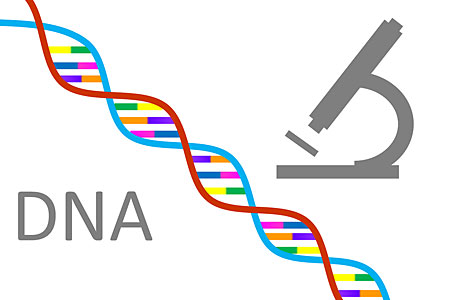
Heredity describes how traits are passed from a hen and rooster to their offspring. These traits are encoded in genes, which in turn are found on chromosomes. Since only the end results — but not the genes and chromosomes themselves — are clearly visible, the mechanics of how heredity works can sometimes seem rather vague. To help clarify how it all works, here are some chicken heredity and genetic basics.
Form
DNA: Short for deoxyribonucleic acid, which consists of a series of large molecules, or chromosomes, organized into two strands that coil around each other and carry genetic information.
chromosomes: The DNA molecules to which genes attach. Chromosomes always exist in pairs, one on each strand. Chickens have 39 chromosome pairs (compared to a human’s 23), for a total of 78 chromosomes.
recombination. During the formation of eggs and sperm, paired chromosomes detach from each other. When sperm fertilizes an egg, one of each chromosome from the rooster matches up with the corresponding chromosome from the hen, creating a new combination of 39 pairs. Recombination is responsible for the variability among individual chickens within a breed.
gene: The basic unit of a trait’s inheritance, consisting of short sequences of DNA attached to a chromosome on the DNA strand. Each chromosome hosts multiple genes, each gene can influence multiple traits, and most traits are influenced by multiple genes. Estimates are that chickens have as many as 23,000 genes (compared to up to 25,000 for humans), which work in combination to determine such factors as a chicken’s basic appearance and behavior.
mutation: A random change in the structure of a gene arising either spontaneously or triggered by something in the environment, such as radiation, chemicals, or toxins. Mutations result in alleles, which are responsible for genetic diversity.
allele: Short for allelomorph, meaning “other form” — an alternative version of a gene occurring at the same locus on a chromosome.
locus. The exact location on a chromosome where a specific gene resides.
homozygous. A chicken with two paired genes that are the same.
heterozygous. A chicken with two different genes — alleles — in a pair.
genetic mapping. Identifying the locus and purpose of each gene.
Function
gene expression: The process by which information encoded in a gene is converted into a specific function.
genotype. Also called genome. The sum total of a chicken’s genes, which are not readily visible, although they determine the chicken’s readily visible characteristics. A chicken’s genotype remains the same throughout the bird’s life.
phenotype. A chicken’s readily visible characteristics, including conformation and behavior, as determined by the bird’s genotype with influence from the chicken’s environment. As a chicken’s internal and external environments change, so also does the bird’s phenotype.
autosome. Any chromosome that is not a sex chromosome.
sex chromosome. Also called an allosome. A chromosome that determines a chicken’s gender. In chickens the sex chromosomes are Z and W (in humans they are X and Y). Roosters have two Z chromosomes; hens have one Z and one W chromosome. Therefore, every chicken has at least one Z chromosome, but only hens have a W chromosome.
sex-linked gene. A gene attached to a sex chromosome that affects some trait other than gender, such as plumage color. The Z chromosome is longer than the W chromosome and encodes more non-gender genetic information, therefore most sex-linked traits come from the Z chromosome. A trait resulting from a gene on the Z chromosome is more likely to be expressed in roosters, while a trait resulting from a gene on the W chromosome is expressed exclusively in hens. Sex Links are an example of how we use chicken heredity and genetic basics to our advantage.
And that’s today’s news from the Cackle Coop.
Gail Damerow has written numerous books about poultry, including The Chicken Encyclopedia.


Can anyone tell me, I have black ausralorps(sorry if the spelling is wrong) thae are just now a year old and have been giving us beautiful brown eggs, but in the last 2 months someone is laying white one or 3 or so. There are always 2 to 3 every day now.